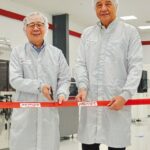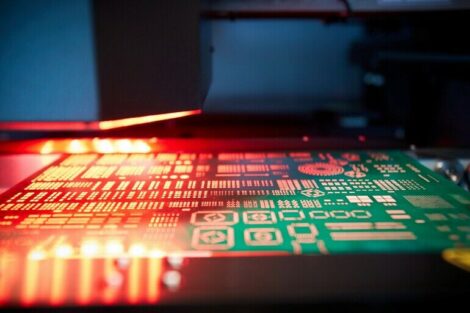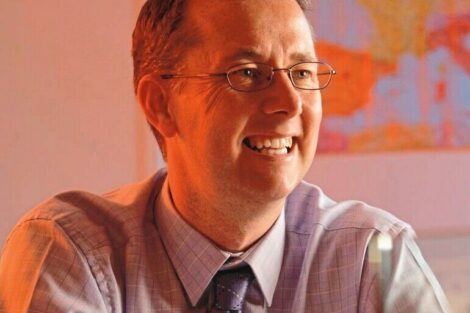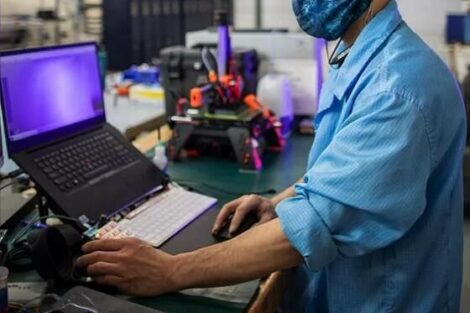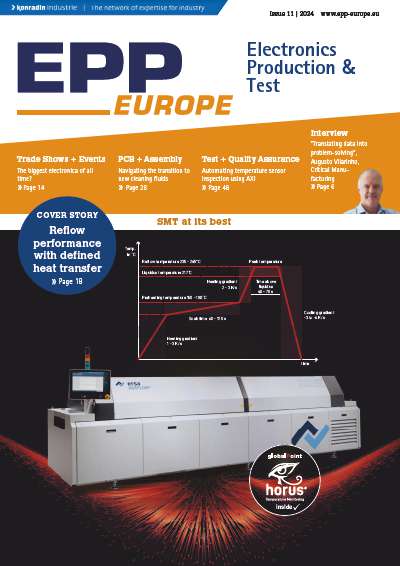EPP Europe: The company recently underwent a rebranding from ‘ASM Pacific Technology’ to simply ‘ASMPT’. Why did you decide to take this step?
Robin Ng: I need to go back in time a bit to answer that. The company started life in Hong Kong in 1975 as ASM Pacific Technology, the Asia-Pacific subsidiary of Netherlands-based ASM International. At the time, Hong Kong was fast becoming the epicentre of the global semiconductor market and we were listed on the Hong Kong Stock Exchange in 1989. The company then grew organically for about 40 years in the area of semiconductor solutions.
In recent years, however, we have expanded into the European and US SMT and semiconductor markets, making acquisitions such as SIPLACE in 2010 (placement), DEK in Great Britain (printing), ALSI in the Netherlands (laser dicing and grooving), NEXX (ECD Panel and Plating) and AEI (automotive CIS) in the US, and Critical Manufacturing (MES Software) in Portugal.
Our business now consists of two segments: semiconductor solutions and SMT solutions. With this distinctive portfolio, we have become the market leader in the two major domains of electronics manufacturing. The two areas don’t operate separately, however, and ASMPT has brought together the best of both worlds, evolving, in this way, from a machine supplier and tech expert to a provider of solutions including analytics, automation, scheduling software, and even complete factory solutions. Our rebranding as ASMPT reflects our evolution into a global company that provides a unique and broad portfolio of solutions for the manufacturing of semiconductors and electronics components.
Günther Lauber: Our customers have not only welcomed our new brand, they also understand the added value we can offer them thanks to the close cooperation between our semiconductor and SMT segments.
What kinds of ‘added value’ specifically?
Lauber: Let’s take the SIPLACE CA2 as an example. Our new hybrid placement platform can process both SMT components and dies directly from the wafer – and all in the same work step.
With regard to the name change, did you also want to make clear that you are a major player not just in Asia but worldwide?
Ng: Yes, as I mentioned earlier, the progression of our acquisitions and our growth make it quite clear that we are a global company with a deep and broad footprint spread across solutions and geographies. Our customers work very closely with us. We have 17 R&D facilities around the world, including many involved in new product development for customers. Having these capabilities closer to our customers is a real advantage. These facilities enable us to respond to the continuing trend towards de-globalization in the semiconductor manufacturing sector which has seen some electronics manufacturers shifting production from Asia to North America and Europe.
Without a doubt, recent massive supply chain disruptions have been a major reason for this trend; behind these location changes is a desire to regain control over the supply chain to avoid depending on others. Wherever possible, our customers prefer support and advice on-site from local teams. This is something we have long had in place for our SMT customers. For our semiconductor solutions customers and partners in Europe, the CoC here in Regensburg offers a direct point of contact to try things out, exchange ideas, and put our machines through their paces. Thus, while production may still take place in Asia, research and development can take place here. Added to this is the fact that many components used in electronics production are purpose-built for customers, and the CoC enables the exchanges that are essential for our teams to understand the customers’ exact requirements so that we can continue to develop new products and technologies.
New products and technologies such as…?
Ng: Well, everyone knows Apple or Microsoft, BMW or Audi, but did you know that there‘s a good chance that your camera, computer, or even car, will contain components manufactured using ASMPT equipment? Take your smartphone, for instance, I’d bet that some of the components in it were manufactured using our machines. Cameras, CMOS image sensors, LIDARs or LED displays – virtually every digital device contains components that probably wouldn’t exist without our technology, which is why our motto ‘enabling the digital world’ is an integral part of our rebranding.
We expect to see particularly rapid developments in the area of silicon photonics i.e. optical waveguides, lenses, polarization converters, and so on. To serve this market, we acquired die bonding specialist Amicra here in Regensburg in 2018. In the future, innovative fibre optic technologies will allow data to travel from one location to another even more quickly, reliably, and securely. The new 5G mobile communication standard and the increasing demand for fast connections in data centres are also driving the development of fibre optic technologies.
Lauber: In Germany, automotive is the flagship industry, which is why it is particularly important for us. We are seeing exciting developments in this sector, driven mainly by the transition to e-mobility of course. But the demand for ICs is also rapidly increasing in conventional vehicles. Again, it is our unique and broad-based portfolio encompassing both semiconductor and SMT solutions that really distinguishes us from our competitors, whose product segments are mostly vertical.
You are currently concentrating heavily on software development (see p. __ for more on this). As a machine manufacturer, do you really have enough experience in this area?
Lauber: Yes we do. We have been developing far more than just hardware for many years, but our software was simply not as visible as our machines. The reality is that our software is in our machines and lines, functioning as a control platform for line-based assembly operations in electronics production and governing the cooperation between machines and people. Software now accounts for a rapidly growing portion of our revenue. Look at Portugal, where we invested in developer of manufacturing execution systems Critical Manufacturing in 2018. For some time now, we have also been focusing on developing AI-powered solutions to extract and analyse data from machines – and not just our own ASMPT machines – in order to achieve a range of benefits like optimizing production operations. We also offer apps for analytics, execution and automation which create value for the customer via improvements in efficiency, quality and flexibility.
Ng: Industry 4.0 has been a major driver in increasing the role that software plays in electronics production. For starters, remote support and remote access became very popular as a result of the Covid-19 pandemic, while time-to-market requirements are getting shorter and shorter. With the collection and analysis of data, it becomes possible to make electronics production faster and more customized in order to better respond to individual customer requirements. Software is becoming more important in our industry. But it is just as important for us to recognise the needs of this fast-moving market and work out what will be required not just tomorrow, but years from now.
ESG – Environmental, Social, and Governance – is now of central importance to companies in Europe. What are you doing in this regard?
Ng: Luckily, investors haven’t only just started paying attention to whether a company adheres to compliance rules, promotes environmental protection, or supports socially responsible operations, and that’s a good thing. To underpin our commitment to ESG, we have identified our vision as ‘to shape a bright and sustainable future for customers, employees, investors, partners and society’. It must be our goal to respect and enable equal rights and equal opportunities for all genders and ethnic groups, as well as participation in decision-making processes, as the backbone of our corporate culture.
We have taken another important step towards ESG compliance by becoming a founding member of the inaugural Semiconductor Climate Consortium (SCC). We joined SCC right from the start, and we hope to be instrumental in helping it achieve sustainable progress with regard to climate challenges in the semiconductor industry.
ESG is a central issue for us, but, as a global company, this is not new. We could certainly use more female employees, but that’s not so easy in the mechanical engineering industry, which has always been dominated by men. Nevertheless, we have targets in place for female representation as part of our ESG goals.
Lauber: Just to add to this – the market of course expects our customers to conform to the principles of ESG . After all, they are the ones who produce the smartphones and cars that we all buy. Society simply expects these manufacturers to operate in a climate-friendly manner and we, as their solutions provider, have a duty to help our customers do this by developing machines that require less energy and emit less CO2 for instance. To ensure that this happens, we have developed a three-stage model for reducing emissions: stage 1 encompasses emissions from fossil fuels for heating and power generation as well as fuels for company vehicles; stage 2 encompasses emissions from electricity usage, including purchasing or generating electricity for the supply of facilities and sites; and stage 3 encompasses emissions from activities along the supply chain. In this way, we close the circle linking us to our suppliers, partners, customers and their customers.








